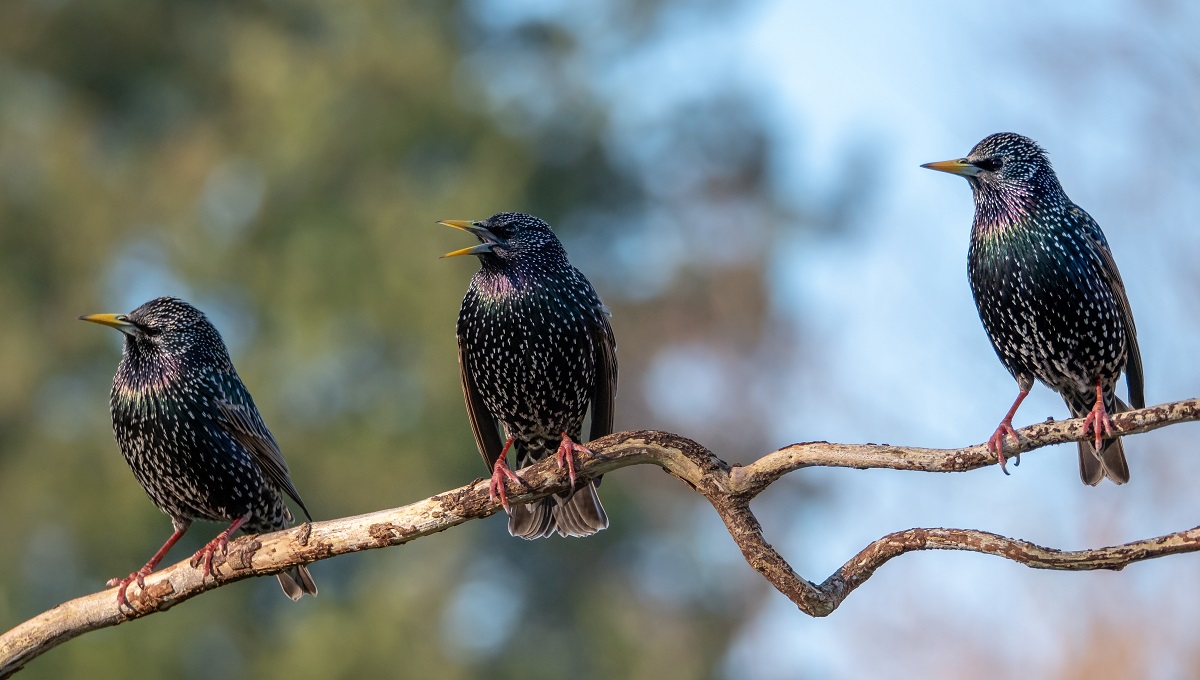European starlings are the only subspecies of starling found in North America. Their colors change as they become adults and during breeding season vs. non-breeding season, causing some to believe there are more species here. They often join large flocks or murmurations of blackbirds and grackles.
The European starling is the only species of starling found in North America. Depending on their age, they have 3 types of coloration – juvenile, breeding, and non-breeding.
Starlings are an invasive species commonly found in urban areas with native blackbirds, who are similar in appearance but are of different species.
Their coloration varies throughout the year, leading to the common misconception that there are a few similar species of starlings living in the United States. In reality, this is the same bird species in different life stages.
Are Common Starlings The Same As European Starlings?
Yes, common starlings (Sturnus vulgaris) and European starlings are the same species.
The term “common starling” is often used as an alternative name for the European starling, and both names refer to the same bird species.
What Color Are Starlings?
There is only one species of starling in the US, but the different life stages look vastly different from one another. The white spots that give the starling their name are only present in the winter.
During breeding season, adult starlings are black with iridescent purple and green feathers. Very young juveniles are pale brown in color, but older juveniles will start to grow white spots on their bellies by late summer.
During breeding season especially, it’s common for starlings to be confused with native blackbirds like grackles. Both birds have glossy black feathers and are similar in size.
Add the fact that these blackbird species often form large flocks together, making it difficult to tell them apart during the spring and summer breeding season.
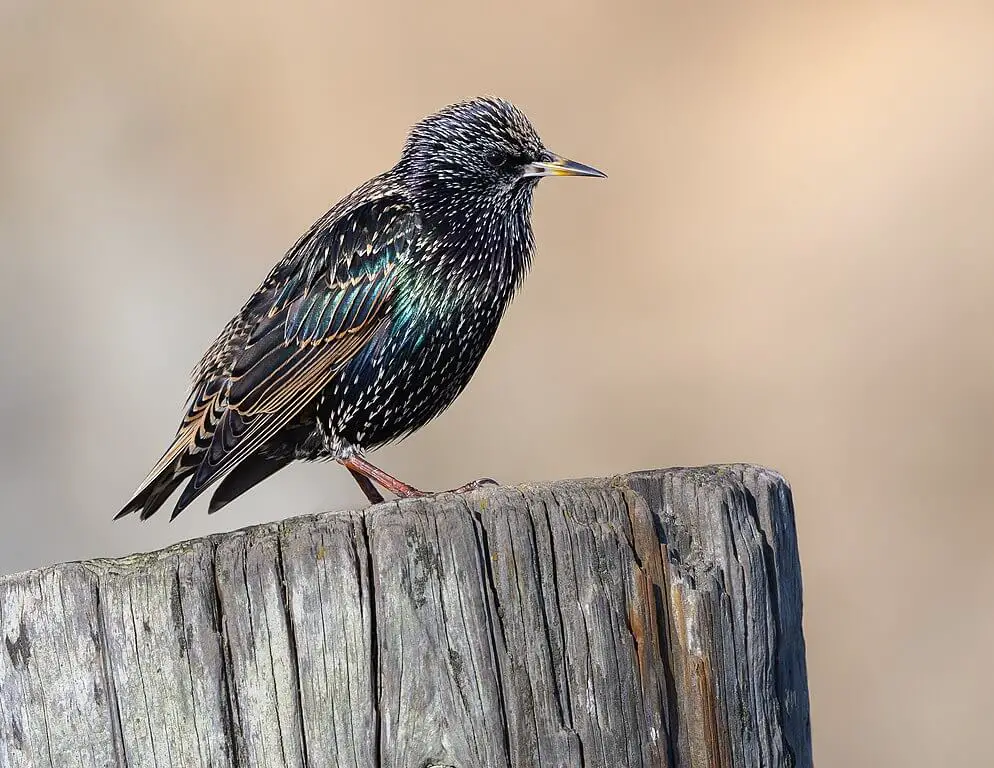
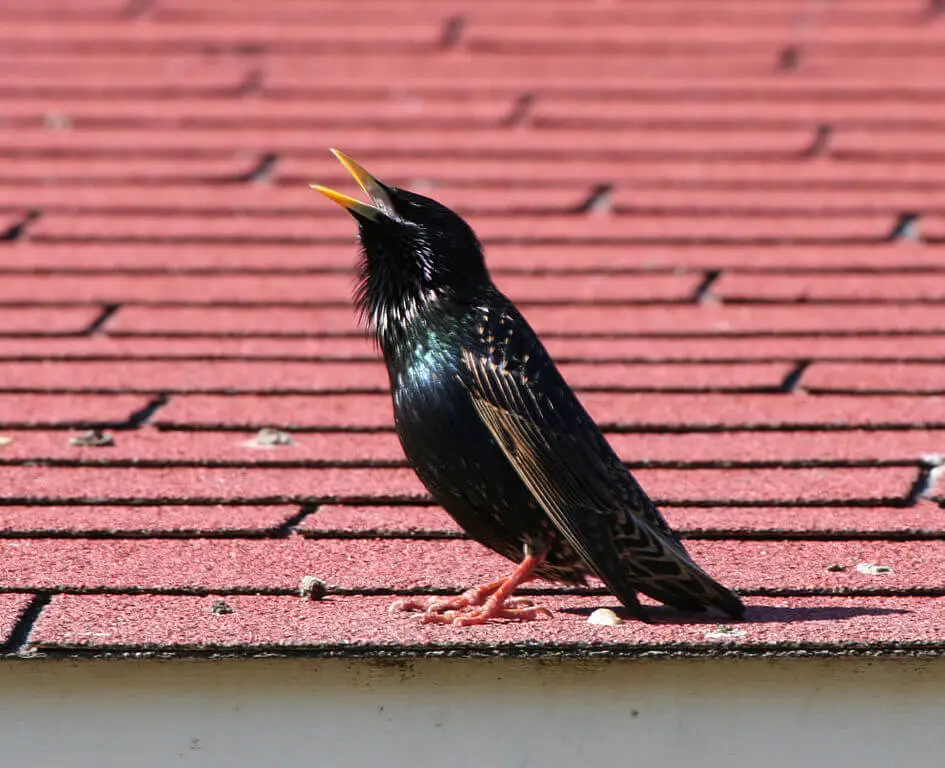
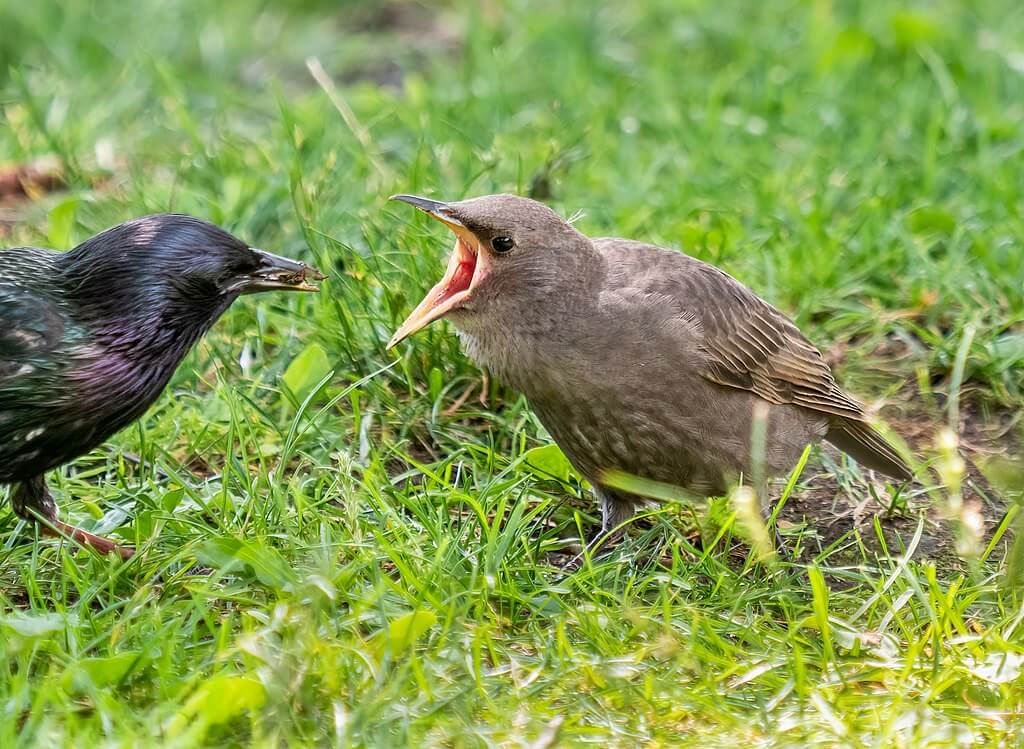
Starling Vs. Grackle
Luckily, there are a few ways to tell the two apart during the starling’s breeding season. Grackles have dark beaks and yellow eyes. Starlings have yellow bills during breeding season and black eyes. Starlings also have a short tail compared to grackles.
Winter season is when European starlings are the easiest to pick out of a large flock. Their telltale white spots covering most of their body make them very noticeable. This is also when their yellow bill darkens to black once again.
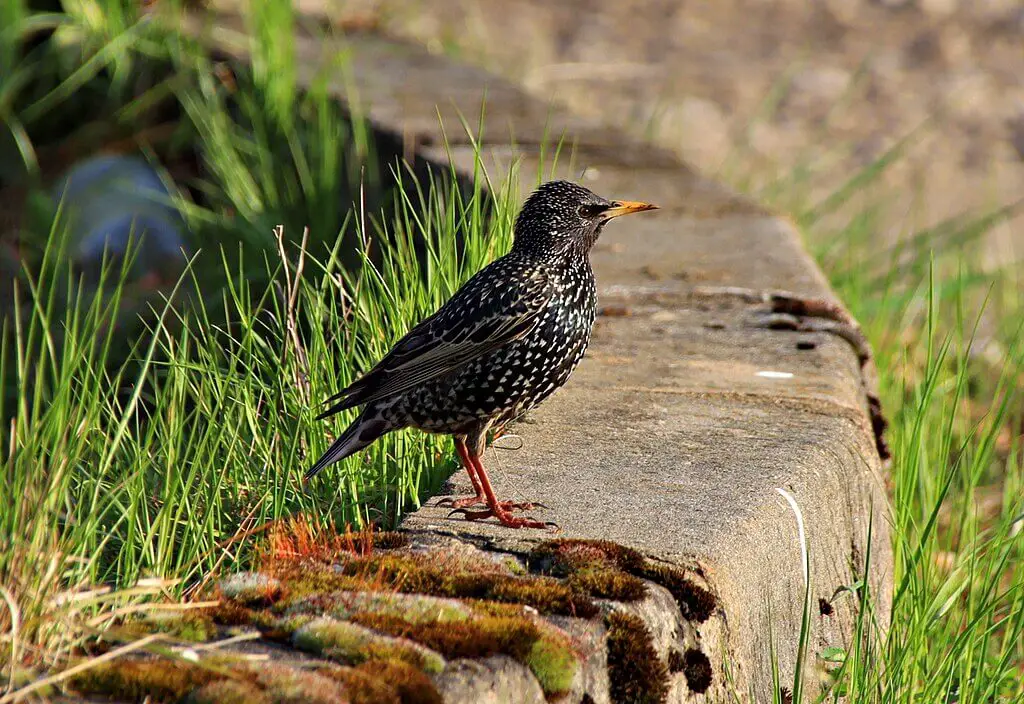
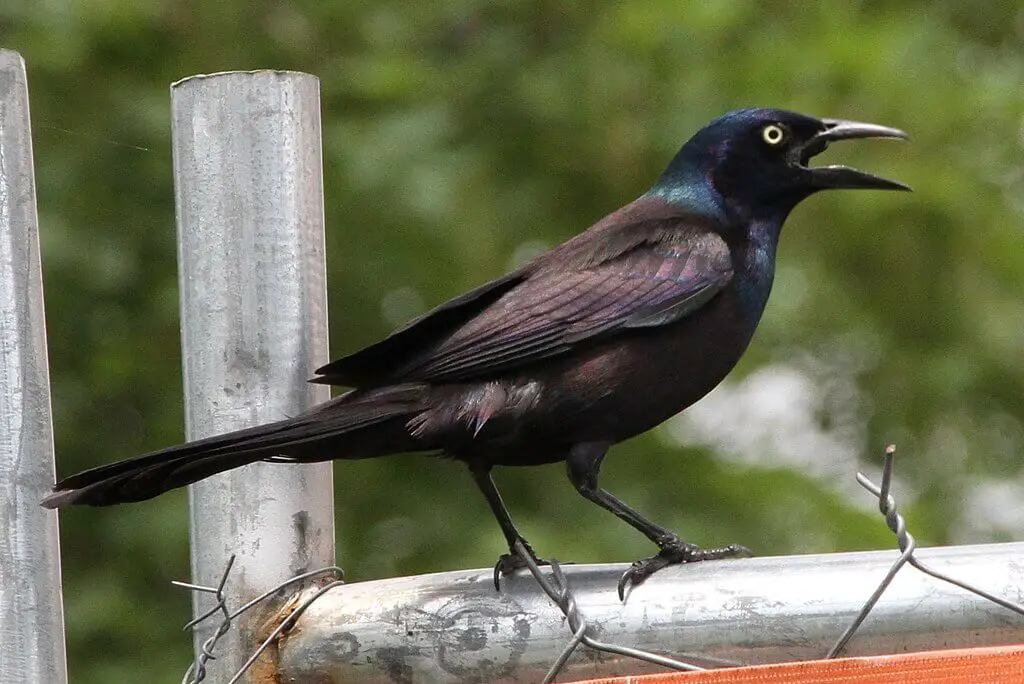
Starling Vs. Sparrow
Starlings are medium-sized birds with a slender body, pointed wings, and a short tail. Many starling species have iridescent plumage with glossy black feathers and metallic green or purple sheens.
Sparrows are generally small birds with a stout body, short wings, and a rounded tail. Their plumage is usually more subdued, with various shades of brown, gray, and white.
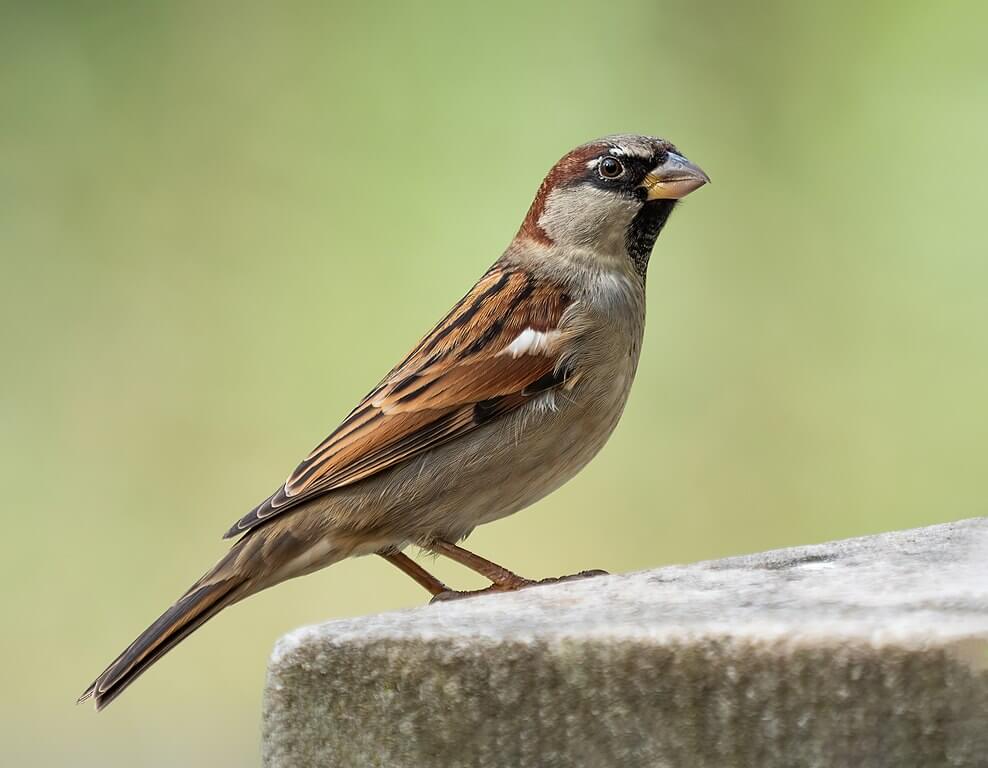
Where do starling birds live?
- Urban Areas: European starlings are highly adaptable to urban environments and are commonly found in cities, towns, and suburban areas throughout the country.
- Suburban Areas: European starlings are also prevalent in suburban neighborhoods, where they find nesting sites in residential areas, parks, and gardens.
- Agricultural Areas: European starlings are frequently seen in agricultural regions, including crop fields, orchards, and livestock areas.
- Grasslands and Open Fields: They are known to forage in grasslands and open fields, where they search for seeds, insects, and other food sources.
- Woodlands and Forest Edges: While not their primary habitat, European starlings can be found in woodlands and forest edges, especially in areas where they overlap with urban or suburban environments.
- Roosting Sites: European starlings are famous for forming large roosts, where thousands to millions of birds gather to spend the night. These roosts can be found in urban areas, woodlands, and other locations with suitable shelter.European Starlings are highly adaptable birds and are known for
What does the starling eat?
- Insects and Invertebrates: They feed on beetles, caterpillars, grasshoppers, ants, spiders, and other small invertebrates.
- Fruits and Berries: European starlings eat berries, grapes, cherries, apples, and other small fruits when available.
- Seeds and Grains: They can consume seeds from grasses, weeds, and agricultural crops like corn and sunflowers.
- Human Food: In urban and suburban areas, European starlings often scavenge for human food scraps, such as bread, crackers, and other discarded items. They are common visitors to outdoor eating areas and garbage bins.
- Nectar: In some regions and during certain times of the year, European starlings may consume nectar from flowers, particularly when other food sources are limited.
What do starlings sound like?
Starlings are known for their diverse and melodious vocalizations. They are highly skilled mimics and can imitate a wide range of sounds, including other bird species, human speech, and mechanical noises.
Logan, Cache County, Utah
Do European Starlings Migrate?
Yes, European starlings are migratory birds.
Many populations from the northern parts of the continent migrate southward for the winter. However, in some regions with milder winters, some starlings may choose to stay year-round.
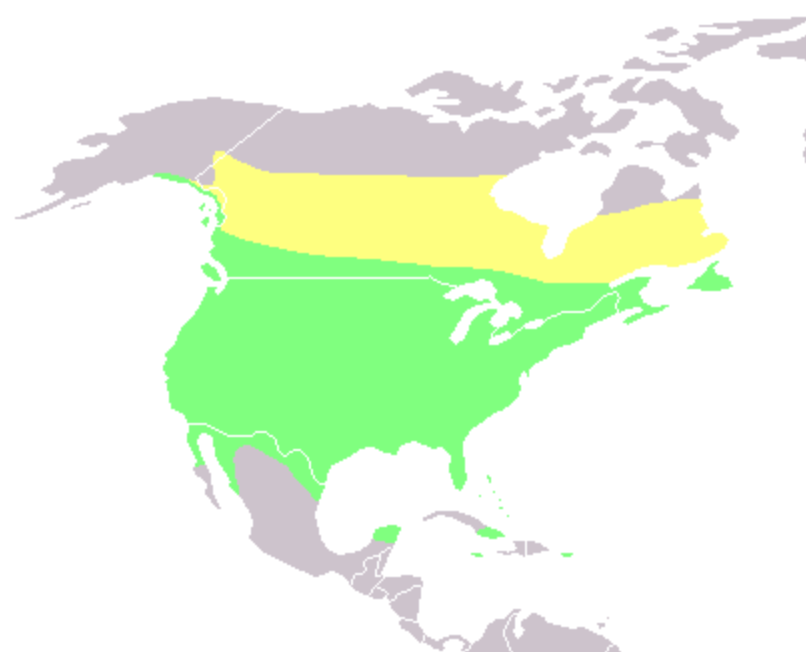
Are European Starlings An Invasive Species?
The North American population of European starlings are considered an invasive species. Any non-native bird species whose presence harms native birds is considered invasive.
Starlings are known to take over crevices and woodpeckers’ holes. Native species like bluebirds and purple martins, and even woodpeckers, are left competing for nesting sites. Providing birdhouses with smaller perches and entrance holes has helped native birds, but the adaptability of starlings keeps their numbers strong.
European starlings also cause millions of dollars in damage to US agriculture every year, further cementing their status as an invasive species.
Why Do Native Bird Species Join The Starling Murmurations?
Grackles and other black birds commonly join large flocks of European starlings, called murmurations. These large flocks can number in the thousands, with multiple bird species flying together on their way to roost for the night.
Murmurations are mesmerizing, but they serve a purpose. They are meant to confuse predators, ensuring their safety with the large number of birds.
How Did The European Starlings End up in North America?
European starlings were thought to be first introduced in North America between 1890 and 1891 by Eugene Scheiffelin. Inspired by a love of Shakespeare, Scheiffelin wanted to introduce all birds mentioned in the Bard’s works.
That account is often contested. We may never know why Scheiffelin released about 100 European starlings into New York’s Central Park, but 16 surviving pairs grew to 200 million within the first 100 years.
While the link to Shakespeare makes for an interesting story, it may not be true. Other scholars find evidence that groups of startlings were introduced in multiple parts of the US as early as 1872. Current flocks of starlings may number 200 million, but it is unlikely that they all are ancestors of Scheiflelin’s flock.
By 2017, the European starling was firmly settled in all of North America. They spend most of the year in Canada, the United States and parts of Mexico. During the winter months, European starlings can also be found in the Bahamas and farther south into the Mexican peninsula.

